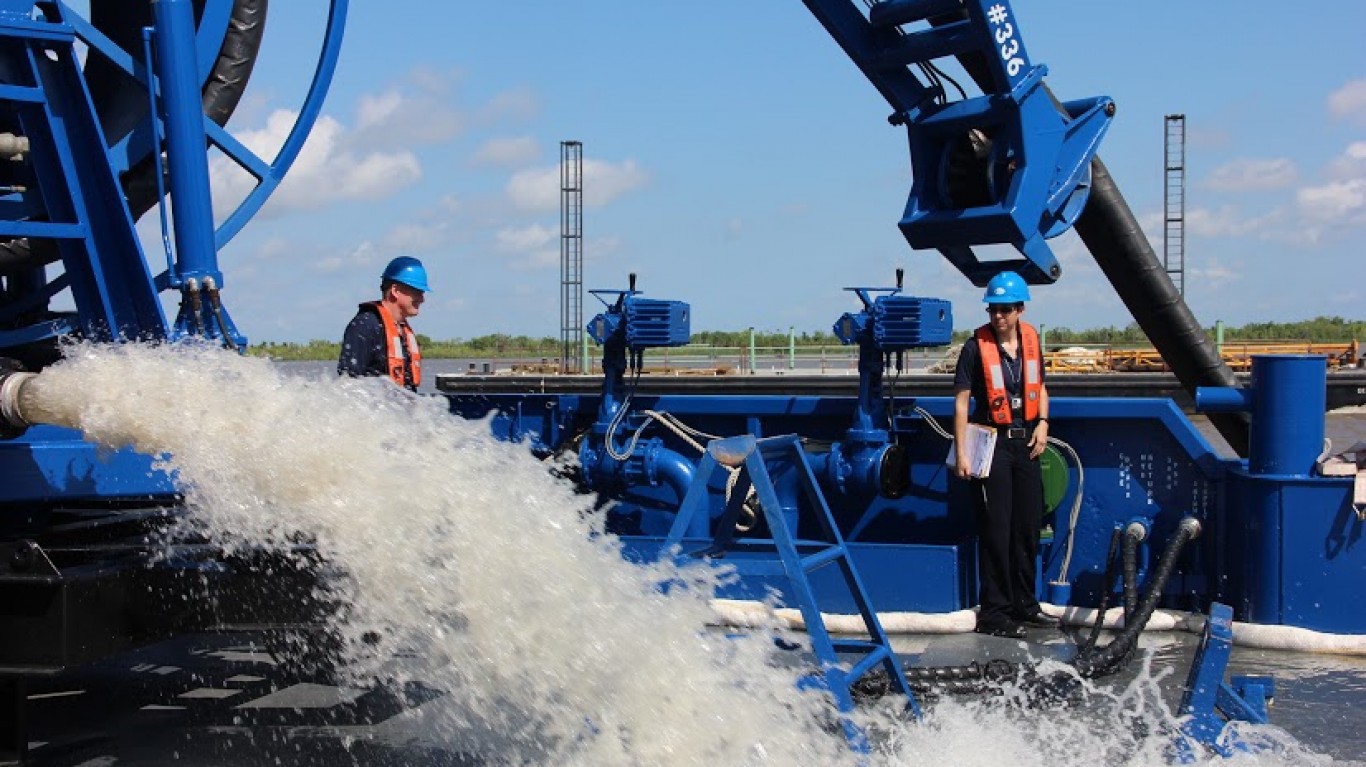Energy
Energy Sector Remains Robust Though Pipeline Constraints Threaten: Dallas Fed

Published:
Last Updated:

In its monthly report on the energy industry, the Federal Reserve Bank of Dallas reported Monday that energy sector momentum remained strong in the third quarter of 2018. The bank’s business activity index dropped slightly from a second-quarter reading of 44.5 to 43.3 but remains near the highest level since the survey was initiated.
The survey respondents are concerned about the lack of pipeline transportation out of the Permian Basin and the widening price differentials on Permian oil and gas.
Exploration and production (E&P) firms reported that production increased for the eighth consecutive quarter. The oil production index dipped from 39.0 in the second quarter to 34.8, and the natural gas production index rose from 33.4 to 35.5, its highest level ever.
Oilfield services firms fared slightly worse in the third quarter. The equipment utilization rate index rose three points to 44.8, but the input costs index rose from 35.6 to 46.6 and the prices received index remained flat at 23.
The employment index for services firms dropped sharply from 44.1 to 31.7 quarter over quarter, while the index at E&P firms rose from 11.6 to 17.4, the highest since the Dallas Fed began collecting the data. Aggregate wages and benefits dipped from an index reading of 27.9 to 23.5.
Survey respondents expect West Texas Intermediate (WTI) crude oil to sell for an average of $68.81 a barrel by the end of this year. Natural gas at the Henry Hub pricing point is expected to average $2.94 per million BTUs. Both are slightly lower than the average prices during the survey collection period.
Here are several comments from E&P survey respondents:
Our main “uncertainty” is the takeaway capacity of crude oil from our Permian Basin properties.
Costs of tariffs on steel seem to be able to flow down to producing companies’ costs of doing business.
Pipeline and trucking constraints in the Permian Basin are hurting us now. There was a $13 per barrel price deduction for August, and I hear it may go to $20 per barrel. This, over a long period of time, is going to impact my drilling program.
Infrastructure build-out to increase transportation capacity will probably take longer than anticipated, resulting in price suppression for much of 2019.
Gas price differentials (relative to NYMEX Henry Hub) are widening tremendously in West Texas and Central Oklahoma also. Gas purchasers in Oklahoma are charging a variety of fees in 2018 for the privilege of taking a producer’s gas production and are advising producers it will get worse after Jan. 1, 2019.
Bias toward higher interest rates and troubled economies in Turkey, South America, etc., could result in oil demand destruction and lower, or flat, oil prices. On the natural gas side, U.S. storage numbers are so low that I think we will see a bump in prices to a $3 handle this winter.
Pipeline takeaway is the major issue for the next nine to 15 months.
Here are some comments from oilfield services companies:
The Permian pipeline capacity and discount on WTI [Midland] have slowed completions. We expect to see fewer wells completed in the second half of 2018. Many E&P [exploration and production] companies will spend their budgets for 2018 before the end of the third quarter of 2018. This higher spending rate was a result of higher efficiency and higher service company prices. The net result will be a decline in total completions in the second half of 2018. We think a rebound will happen in first quarter 2019, but the Permian will continue slow growth until the pipeline capacity is increased and the WTI [Midland] discount is eliminated.
We are hopeful that the pipeline constraints will be resolved in 2019. Although WTI prices are staying in the high $60’s per barrel, in the Abilene area we are being paid in the low $50’s per barrel.
Completions continue to lag drilling activity. There is increasing uncertainty in crude prices and increasing worry about a global economic slowdown. Recovery is getting long in the tooth.
We are having difficulty hiring and retaining commercially licensed drivers. We are also experiencing difficulty hiring qualified roustabout hands and getting personnel to relocate to the Permian Basin.
We are still lacking enough qualified drivers who are able to pass motor vehicle record checks and Department of Transportation preemployment drug tests. Additionally, the market is so competitive for drivers that they will jump ship for an extra 50 cents per hour.
The Dallas Fed’s company outlook index posted a 10th consecutive positive reading, edging up one point to 46.4 in the third quarter. The uncertainty index rose 10 points to 8.8, suggesting that uncertainty regarding the firms’ outlooks increased. The increase was particularly prominent among oilfield services firms, where the outlook uncertainty index jumped nearly 22 points to 14.7.
Ever wanted an extra set of eyes on an investment you’re considering? Now you can speak with up to 3 financial experts in your area for FREE. By simply
clicking here you can begin to match with financial professionals who can help guide you through the financial decisions you’re making. And the best part? The first conversation with them is free.
Click here to match with up to 3 financial pros who would be excited to help you make financial decisions.
Thank you for reading! Have some feedback for us?
Contact the 24/7 Wall St. editorial team.